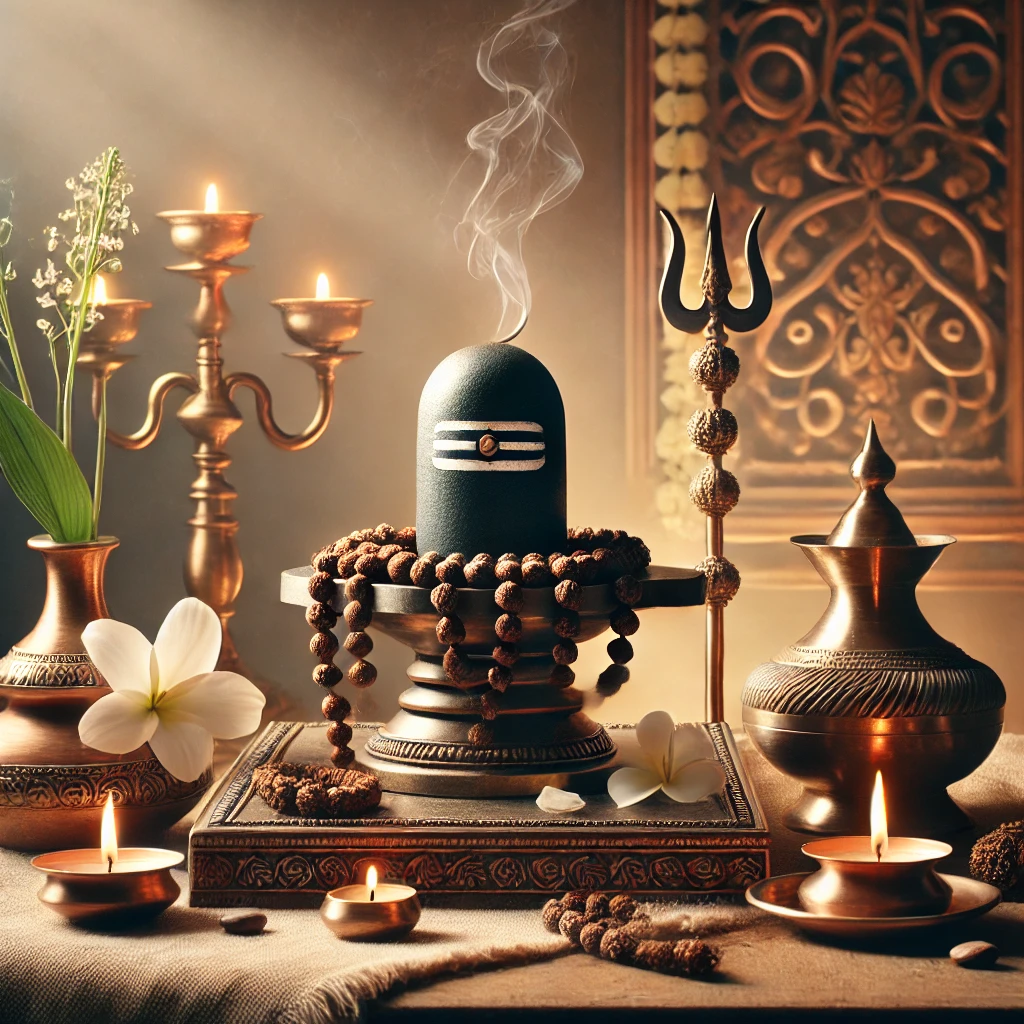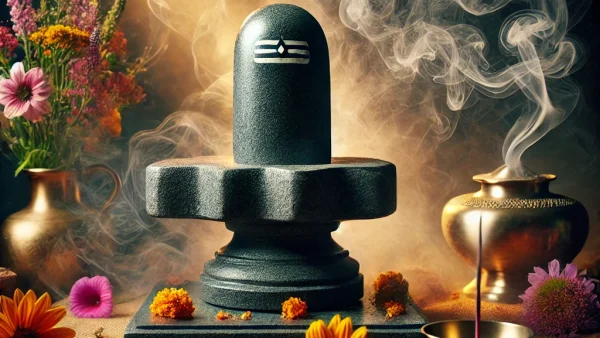Shiva Lingam at home is an age-old tradition that has inspired devotion, discipline, and a connection to the divine among followers of Lord Shiva. In this guide, we’ll explore the practical and spiritual benefits of worshiping the Shiva Lingam at home, along with step-by-step instructions on how to perform a simple yet profound Shiva Puja.
Why Worship Shiva Lingam?
The Shiva Lingam symbolizes the formless, powerful, and infinite nature of Lord Shiva. It represents the universe’s cyclical nature — the balance between creation, preservation, and dissolution. Worshiping Shiva Lingam at home not only strengthens one’s spiritual connection with Shiva but also brings various blessings, from protection against negative energies to mental and physical well-being.
Benefits of Worshiping Shiva Lingam at Home
Protection from Evil Energies
Chanting mantras like “Om Namah Shivaya” and the Maha Mrityunjaya mantra while performing Shiva Puja at home is believed to create a protective aura. It helps in dispelling negative forces and keeps the household safe from evil energies. This daily ritual brings peace, warding off premature death and enhancing life’s harmony.
Spiritual Growth and Salvation
Devotees often meditate and engage in yoga during the Shiva Puja, especially in the month of Shravan. This spiritual practice purifies the mind and soul, guiding devotees toward moksha, or salvation. By worshiping Lord Shiva, one can find clarity, achieve peace, and experience a closer connection to the supreme reality.
Mental Health and Inner Strength
Lord Shiva’s fearless nature inspires his devotees to confront their challenges and overcome personal fears. Worshiping the Shiva Lingam at home imbues one with mental strength, resilience, and clarity. This practice can also bring success in one’s personal and professional life, offering mental stability and confidence.
Auspicious Days for Worship
Mahashivratri is the most revered day for worshiping Lord Shiva, but other days like Shravan Maas and Kartik Purnima are also ideal. On Mondays, devotees often observe fasting, especially unmarried women seeking a spouse with qualities like Lord Shiva, through the Sola Somvar (16 Mondays) fast.
Financial Prosperity and Removal of Grah Dosha
Worshiping Lord Shiva can also bring wealth and prosperity. Performing the Rudrabhishek with panchamrit (a sacred mixture of milk, curd, honey, sugar, and ghee) can attract prosperity and success. Additionally, Shiva worship is beneficial in alleviating the effects of Grah Dosha such as Shani Dosha.
Preparing for Shiva Puja at Home
To perform Shiva Puja, you’ll need the following items:
- Raw Milk: Symbolizes purity and devotion.
- Chandan (Sandalwood paste): Known for its cooling and calming effects.
- Curd and Honey: For prosperity and sweetness in life.
- Bel Patra and Datura Flowers: Sacred offerings in Shiva worship.
- Ganga Jal (or plain water): For purification.
- Incense sticks (Agarbatti) and Ghee: For fragrance and light.
- Camphor (Kapoor): Represents the burning away of ignorance.
- Fresh Cloth and Bells: To purify and signify the presence of the divine.
All of these puja items, along with Shiva Lingam and Vibhuti, are available for purchase at spiritualguru.lk.
Step-by-Step Guide to Worshiping Shiva Lingam at Home
1. Choose an Auspicious Day
While the Shiva Lingam can be worshiped daily, Monday is particularly auspicious. Begin the puja early in the morning for a fresh and powerful start to the day.
2. Install the Shiva Lingam
Place the Shiva Lingam in a clean, sacred space in your home, preferably in the puja mandir. Ensure it’s placed facing east and accessible for regular worship.
3. Take a Bath and Wear Clean Clothes
Purity is essential in Shiva Puja. Start by taking a bath and wearing freshly washed clothes. This symbolic cleansing prepares you physically and spiritually.
4. Light the Lamp and Incense
Light a brass lamp with ghee, and place it near the Shiva Lingam. Lighting incense sticks adds fragrance and sanctifies the space, creating an atmosphere of reverence and devotion.
5. Chant “Om Namah Shivaya”
As you sit before the Shiva Lingam, chant “Om Namah Shivaya.” Repeat this sacred mantra to invite the divine presence and calm the mind. Chanting can be done silently or aloud, depending on personal preference.
6. Offer Abhishekam (Holy Bath) to the Shiva Lingam
Begin the Abhishekam by pouring water, preferably Ganga Jal, over the Lingam. Follow with milk, honey, curd, ghee, and then water again. This sequence represents purification and devotion, and each offering symbolizes a prayer for a particular blessing.
- Milk: Purity and nurturing energy
- Honey: Sweetness in relationships
- Curd: Prosperity and health
- Ghee: Spiritual illumination and peace
- Water: Cleansing and purification
7. Wipe and Adorn the Lingam
After the Abhishekam, rinse the Lingam with fresh water and gently pat it dry with a clean cloth. Apply Chandan (sandalwood paste) and decorate with Bel Patra and flowers.
8. Light Camphor and Offer Arati
Light camphor and wave it in front of the Lingam while ringing a bell. This signifies the removal of darkness or ignorance and welcomes divine light into the home.
9. Meditate or Sit in Silence
After the Arati, spend a few minutes in silence or meditation, absorbing the peaceful energy created by the worship. This is a powerful time for self-reflection, where you can feel the divine presence within.
10. Conclude with Prasad
Distribute prasad like fruits, coconut, and sweets to family members. This offering symbolizes the blessings of Lord Shiva, shared and cherished within the household.
The Deeper Significance of Shiva Puja: Connecting with the Supreme
Worshiping Shiva Lingam transcends the physical rituals and taps into the spiritual essence of devotion. The Lingam itself is a powerful symbol of Lord Shiva’s formless, boundless energy. For many, performing the daily Shiva Puja is a reminder of the eternal cycle of creation and dissolution, urging devotees to go beyond material concerns and experience unity with the divine.
There are two main paths in worshiping Shiva:
- Scriptural Worship (Agama): Based on sacred texts, emphasizing precise rituals and guidelines.
- Devotional Worship (Nigama): Driven by love and devotion, allowing for a more personal approach to worship.
Whether one chooses a disciplined approach or a simpler, heartfelt method, Lord Shiva responds to the sincerity behind each prayer.
Tips for Worshiping Shiva Lingam at Home
- Consistency is Key: Daily puja brings cumulative benefits over time.
- Simplicity Works: While a detailed ritual has its beauty, even a simple offering with pure devotion is powerful.
- Special Days: Observing fasts or special worship on Mahashivratri, Shravan Mondays, or Kartik Purnima amplifies the blessings.
- Mindfulness in Worship: During puja, focus on each step and meaningfully connect with the Supreme.
Shiva Puja: A Path to Divine Grace and Personal Growth
The benefits of worshiping Shiva Lingam are far-reaching, bringing harmony, peace, and protection to one’s life. This ritual is a powerful way to invoke Lord Shiva’s blessings, seeking his guidance and strength in every aspect of life. From removing negative energies to promoting mental well-being, performing Shiva Puja at home is a journey toward self-realization and enlightenment.
By worshiping the Shiva Lingam, devotees invite the divine energies into their homes, creating a sanctuary of peace and prosperity. For those who wish to begin or deepen their spiritual practice, all the essentials for Shiva worship — including the Lingam, Vibhuti, and other sacred items — are available at spiritualguru.lk.
Through this profound practice, devotees connect with Lord Shiva, experiencing his blessings in the form of resilience, prosperity, and inner peace.





Leave a comment